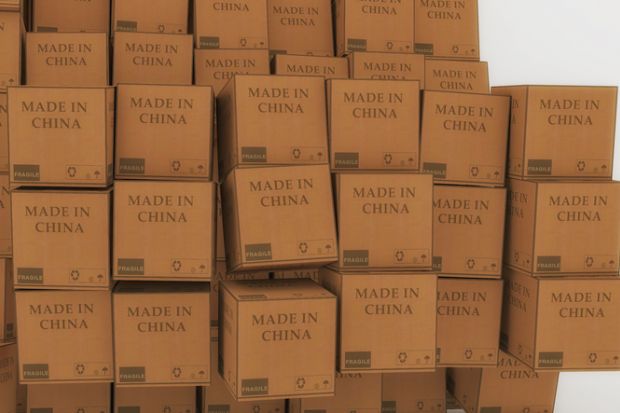China is pumping cash into homegrown academic journals as it seeks to challenge the growing dominance of Western publishers in the country.
Thirty English-language periodicals focused on science, technology and medicine have been selected to receive additional funding – ¥500,000 (£57,000) – under China’s Journal Excellence Action Plan. The five-year initiative, first launched in 2019, seeks to improve the competitiveness and global influence of science and technology journals in core subjects such as mathematics and physics, as well as frontier areas such as information technology and energy and environment issues.
“Science and technology journals…directly reflect a country’s national technological competitiveness and cultural soft power,” said the China Association for Science and Technology, which announced the list. Despite the growth of its research base, China “lacks world-class science and technology journals with global influence” and “is in an obviously disadvantageous position in global science research competition”, the organisation continued.
The initiative is aimed in part at challenging the dominance of Western publishers in China, with the association describing science and technology content as being part of “a nation’s strategic resource”.
An opinion piece published in state-owned media in 2018 said that groups such as Elsevier and Springer Nature had been “seizing” China’s publishing resources, “posing a serious challenge” to domestic journals.
“Key parts of research publishing are controlled by overseas publishing organisations, due to the fact that our science and technology journals are lagging behind,” the article said.
The initiative plans to make selected journals “world-class” within five years, encouraging them to build strong links with leading global research institutions, invite submissions, and “benchmark” their “world-class” output.
“My understanding of ‘benchmarking the world-class’ would be world-class research, rather than world-class journals, because top journals do not necessarily equate to top research,” said Liu Yidong, director of the Centre for Science, Technology and Society at the Chinese Academy of Sciences.
“Even the so-called ‘top journals’ have obvious flaws, it is totally possible to create new ‘top journals’ if they stick to the acceptance principle of prioritising original research results. Hence, focusing on a few journals to catch up or surpass current top journals as role models seems more feasible to me.”
China has more than 5,000 journals in science, technology, and medicine, making it the third biggest producer of such titles after the US and UK. However, periodicals published in English account for only 6.5 per cent of the total and their overall quality is regarded as low.
In response, another goal of the journal initiative offers funding to publishers and associations to create new journals or merge existing titles.
“Apart from funding, the key to success lies in reforming review criteria to emphasise original innovation and disruptive innovation,” Professor Liu added.
Register to continue
Why register?
- Registration is free and only takes a moment
- Once registered, you can read 3 articles a month
- Sign up for our newsletter
Subscribe
Or subscribe for unlimited access to:
- Unlimited access to news, views, insights & reviews
- Digital editions
- Digital access to THE’s university and college rankings analysis
Already registered or a current subscriber? Login








